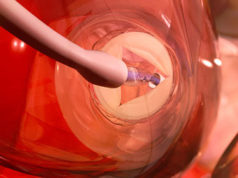
A recent study—presented at the American Heart Association annual meeting (16–20 November, Dallas, USA) and published ahead of print in the Journal of the American Medical Association—found that early therapeutic hypothermia (prior to hospital; immediately after return of spontaneous circulation) does not improve survival or neurological function in patients who have survived a cardiac arrest. The principal investigator of the study, Francis Kim (Department of Medicine, School of Medicine, University of Washington, Seattle, USA) talks to Cardiovascular News about the role of pre-hospital therapeutic hypothermia for the management of patients who have survived a cardiac arrest.
What data are available for therapeutic hypothermia?
The rationale for therapeutic hypothermia comes from two studies that were published in The New England Journal of Medicine in 2002. They both found that in patients who had survived cardiac arrest due to ventricular fibrillation, mild hypothermia (either through ice packs or cooling blankets) improved survival.
However, the recent targeted temperature management (TTM) study (also published in The New England Journal of Medicine) has generated a lot of controversy. This study found that hypothermia at a targeted temperature of 33 degrees did not significantly improve outcomes compared with hypothermia at a targeted temperature of 36 degrees in patients who had survived an out-of-hospital cardiac arrest.
What was the rationale for conducting your study?
The aim of our study was to assess the benefits of cooling as early as possible after the return of the pulse. Animal studies have indicated that the benefits of therapeutic hypothermia may decrease after reperfusion and, therefore, earlier cooling may be more beneficial. Furthermore, intravenous cooling has been proposed as a safe and effective portable method that can be potentially used by the emergency services.
What method of cooling did you use in your study?
As soon as possible after the return of the pulse [in patients randomised to receive pre-hospital cooling], paramedics rapidly infused patients with up to two litres of normal saline that had been stored at four degrees.
You did not find that pre-hospital cooling improved survival or neurological status. Why did you think that was?
There are several potential reasons why early cooling does not appear to be beneficial:
After their pulse has returned, most patients have a temperature of 36 degrees and the TTM study found equivalence between 36 and 33 degrees; therefore, perhaps early cooling is not necessary.
Using two litres of cold fluid may have caused harm and negated any potential benefits of early cooling. Infusion of fluid was associated with increased rates of re-arrest during transport.
We may need longer to see a benefit with early cooling in terms of neurological outcome [the study assessed patients at discharge]. At the moment, we are assessing outcomes at the three-month follow-up point and would like to assess later time points as well.
Do you think pre-hospital cooling still has potential to be an effective therapy?
Possibly if a different cooling method was used (ie. not fluid) or starting cooling even earlier than in our study (at the time of cardiopulmonary resuscitation) may be more beneficial.










